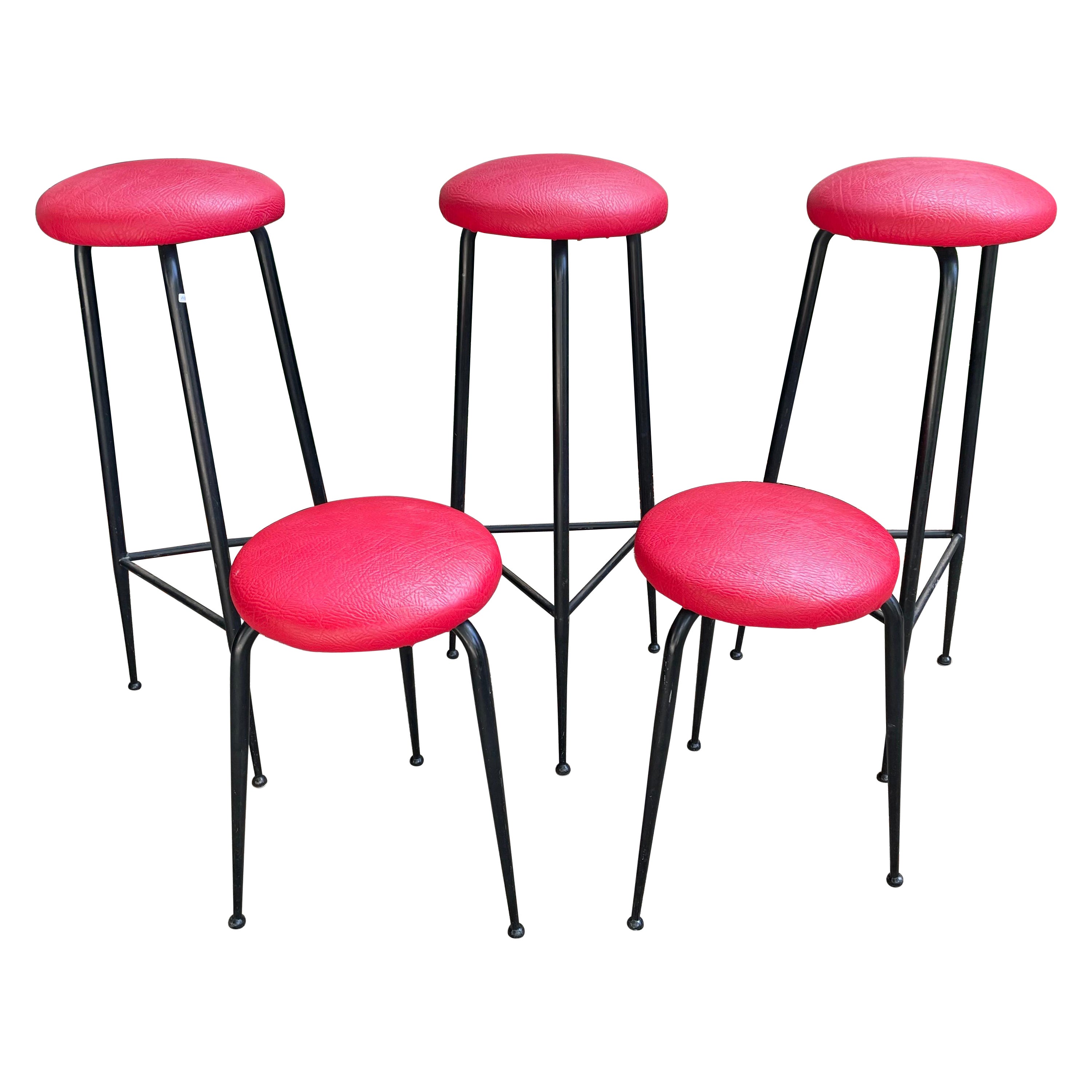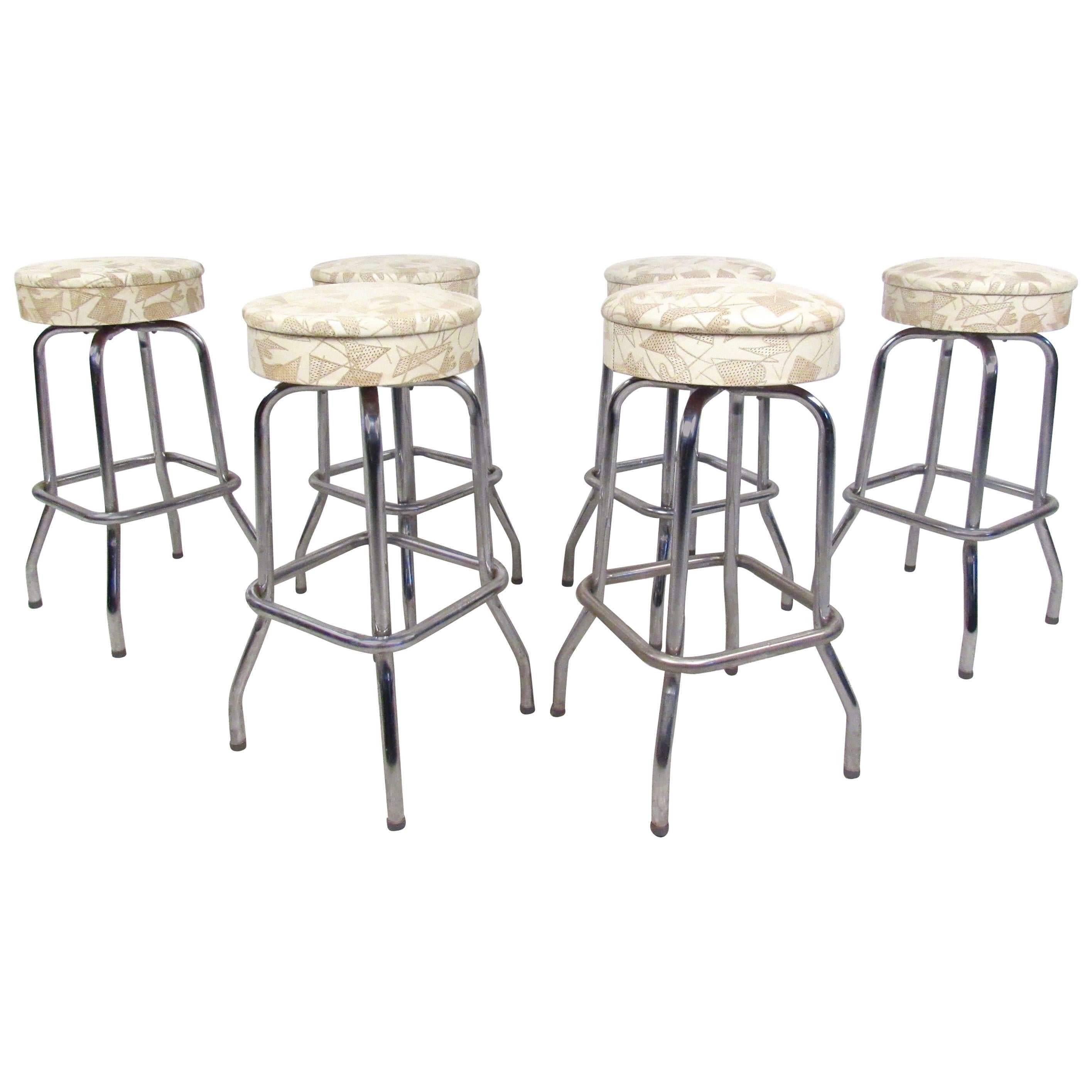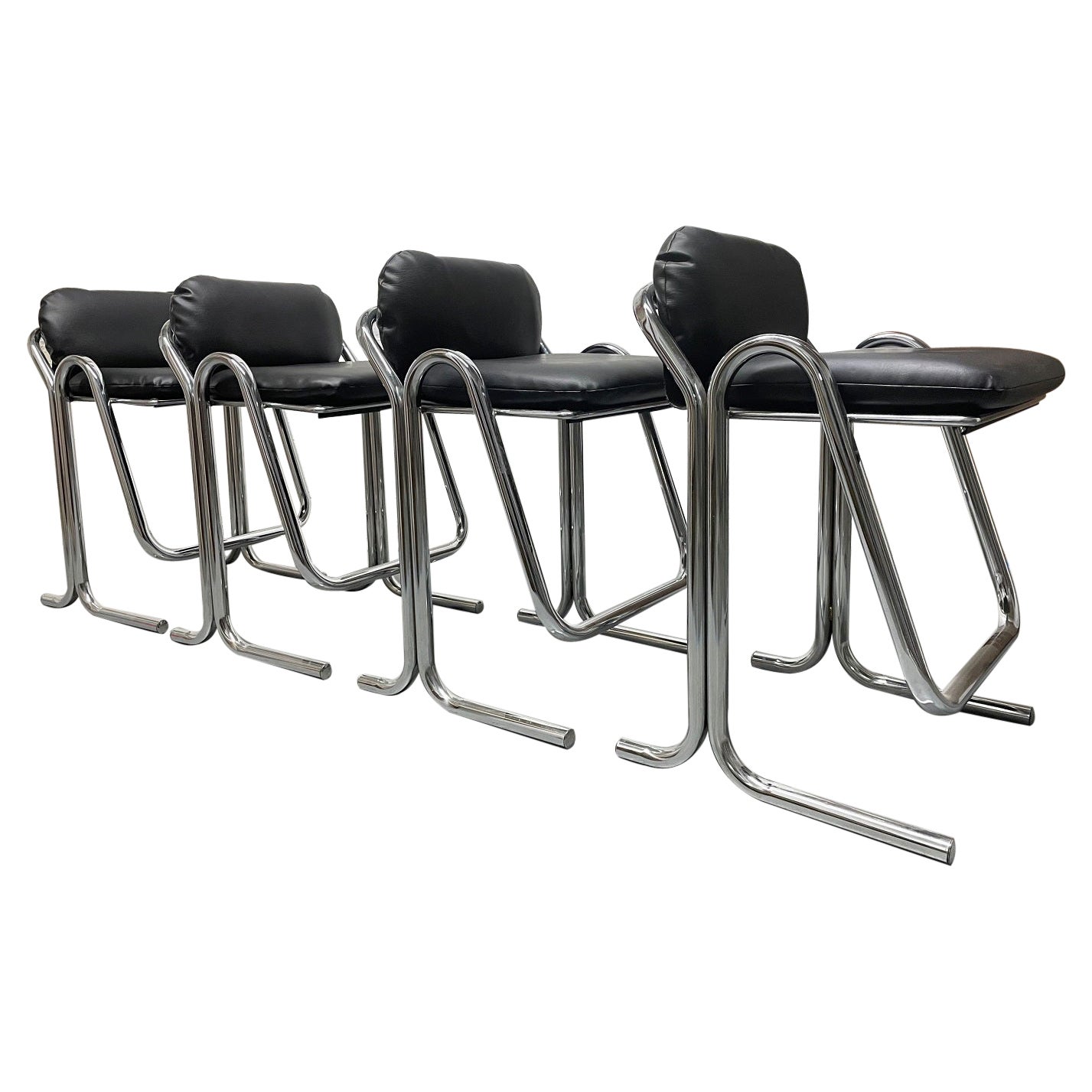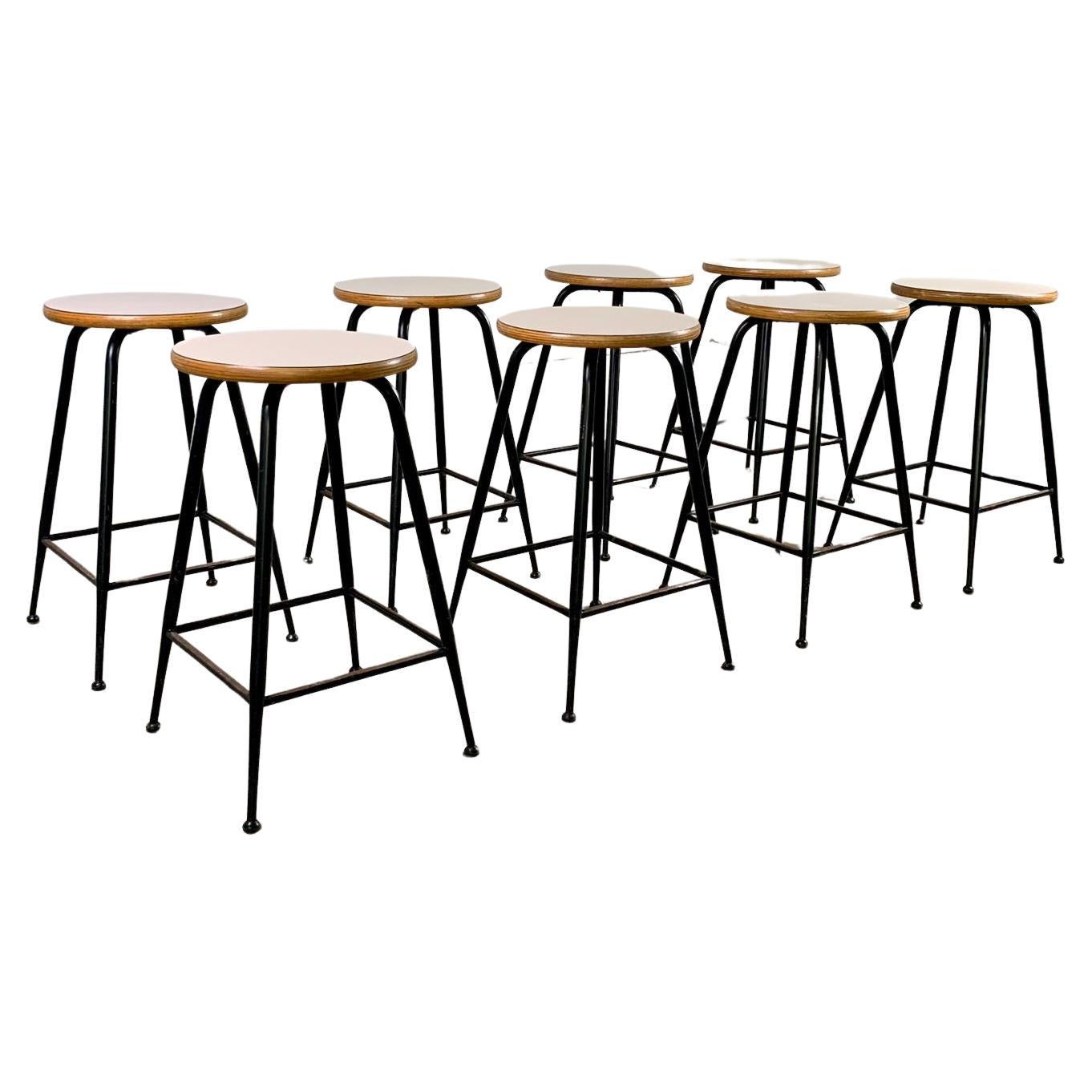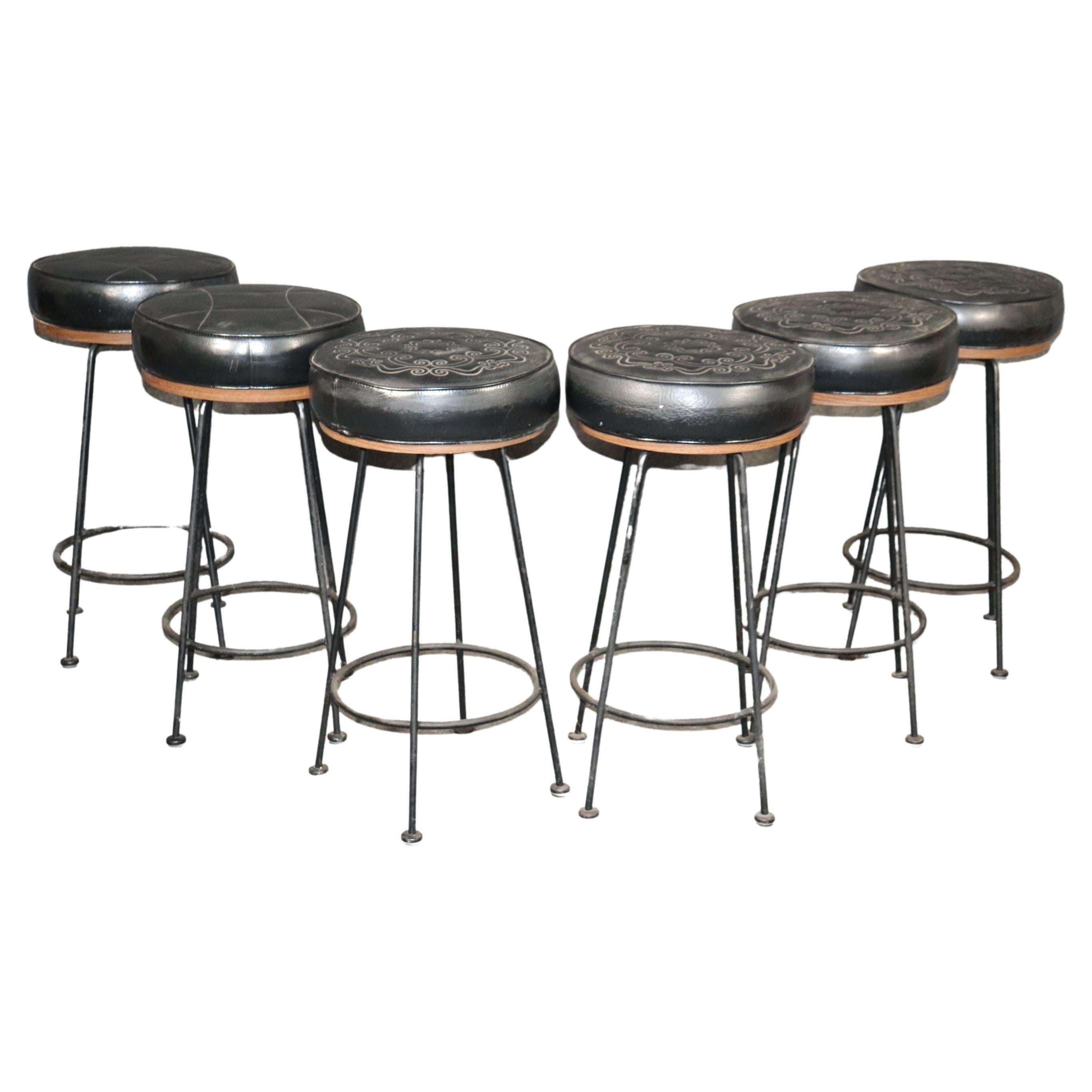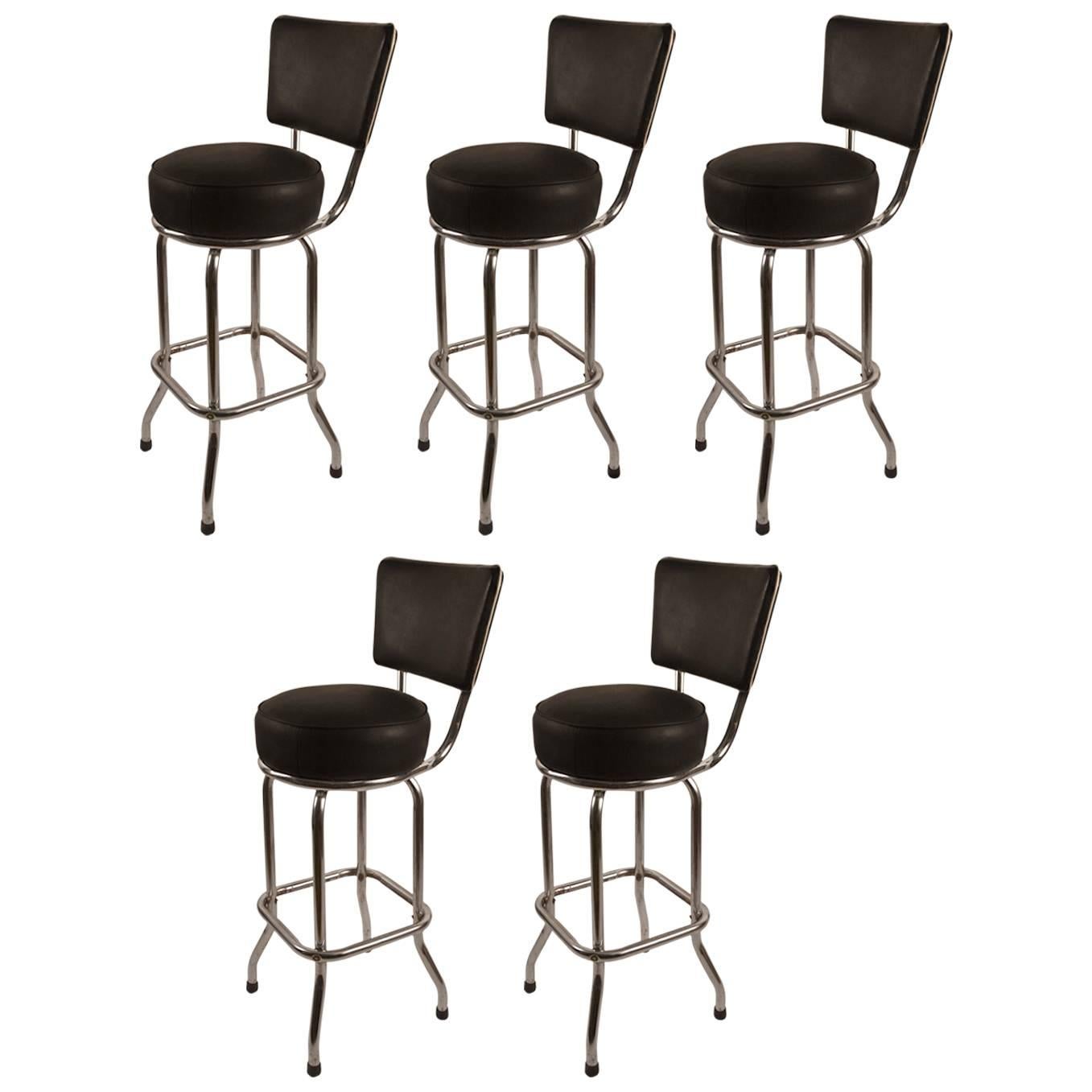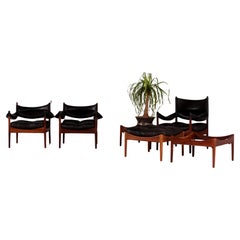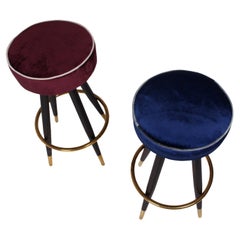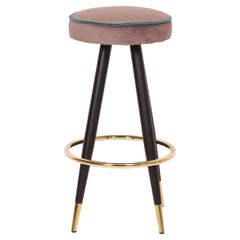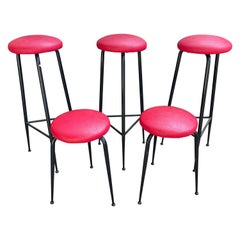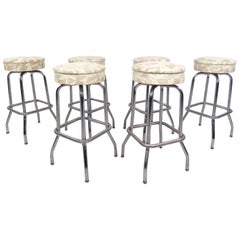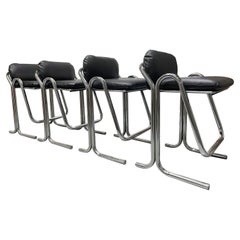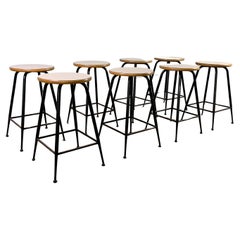Items Similar to SET of SIX mid-century STOOLS by Günter Talos Vienna chrome iron pin legs 1950s
Want more images or videos?
Request additional images or videos from the seller
1 of 14
SET of SIX mid-century STOOLS by Günter Talos Vienna chrome iron pin legs 1950s
$3,865.03per set
£2,857.47per set
€3,240per set
CA$5,316.29per set
A$5,909.39per set
CHF 3,097.58per set
MX$72,167.97per set
NOK 38,671.45per set
SEK 36,382.62per set
DKK 24,666.07per set
About the Item
SOLID HEAVY DUTY MADE FOR THE ETERNITY
Six mid-century stools designed and made in Vienna around 1950 by J. A. Talos, Vienna XII. Bezirk , Dörfelstraße 6-8 .
The architectually significant and quite representative building is still existing and under monument protection - the company existed until between 1976 and 1978 according the senior Owner the Cabinet Maker Anton Griessler - just opposite the road who´s son was so kind to give me those informations on the phone.
- ... we love to do researches !
designed by Günter Talos.
The company produced high quality iron furniture and was having the honour in taking part in the Werkbundausstellung 1930
The triangular seat is covered with its original red leatherette and as a special featuret they have a solid round and rounded straight chromed ornament in its middle - solid steel chromed hairpin legs
Vintage condition is very good with some signs of age.
legs have been fitted with strong felt
Dimensions:
Width 40cm
Depth 40 cm
Height 46 cm
Seat height 46 cm.
Weight: 4.5 Kg / each
shipped in 2 custom made boxes 3 stools each for a maximum of safety
For people interested in the fascinating Viennese History of Art / Art and Design of the early 20th Century:
Werkbund Exhibition 1930
Werkbund Vienna
The Werkbund Wien was an association of artists, industrialists and craftsmen that split off from the Österreichischer Werkbund, founded in 1912, in 1921 under the leadership of Josef Hoffmann and reunited with it in May 1928. The latter was dissolved by the National Socialists in 1938.
History
In 1920, on the occasion of an exhibition in the Vienna Museum of Art and Industry, the fundamental discussion flared up again as to whether the Austrian Werkbund should be oriented towards arts and crafts or whether serial, industrial production based on artistic designs should be the decisive factor. This discussion had been initiated by the art critics Arthur Rössler and Hans Tietze; the latter spoke of "a thousand cute things" in view of the elitist arts and crafts of the Wiener Werkstätte. Josef Frank supported their attitude, but did not attack Josef Hofmann personally. Josef Hofmann and his followers flatly rejected modern industrialization tendencies and wanted to see arts and crafts as traditional and elitist. The dispute led to the Vienna Werkbund splitting off from the Austrian Werkbund in May 1921.
Josef Hofmann and a large part of the board members henceforth formed the Werkbund Wien, which was incorporated as an association into the Deutscher Werkbund; the first president became Margarethe Stonborough-Wittgenstein, Ludwig Wittgenstein's sister. In the "old" Werkbund, the architect Robert Oerley took over the office of president.
Due to the personal union with the director of the Wiener Werkstätte, Josef Hofmann, the Werkbund Vienna remained in its infancy and did not achieve any particular effectiveness.[3] In 1925, on the occasion of the Austrian participation in the exhibition at the exposition des arts décoratifs et industriels modernes in Paris, the two groups came closer again and Josef Hofmann took over the artistic direction. He designed the pavilion, Josef Frank created the coffee house in front of it, Oskar Strnad an "organ tower" and Peter Behrens a glass house, so that representatives of all groupings were involved.
Starting in 1926, talks were held about reunification, which was finally accomplished in May 1928: The Vienna Werkbund rejoined the Austrian Werkbund. Hermann Neubacher, head of the Gemeinwirtschaftliche Siedlungs- und Bauaktiengesellschaft GESIBA, mayor of Vienna from 1938 and close to the German nationalist camp[4], was elected president, and the painter László Gábor was elected executive board member. Josef Frank and Josef Hofmann became vice presidents.
Under the artistic direction of architect Josef Frank, who stood for undogmatic modernism, the Werkbund housing estate in Vienna was built between 1930 and 1932. Frank was responsible for the overall spatial disposition of the complex, László Gábor (1895-1944), painter and executive secretary of the Werkbund, for the coloring concept. The client was the municipal housing company Gesiba under General Director Hermann Neubacher, the president of the Austrian Werkbund. Federal President Wilhelm Miklas and Mayor Karl Seitz spoke at the opening on June 4, 1932.
Between 1932 and 1934, tensions arose due to anti-Semitic tendencies towards Jewish architects and artists, and the old discord flared up. There was a new split and Josef Hofmann, together with other members, founded the "New Werkbund Austria", from which Jewish members were excluded. This led to the final break between Josef Hofmann and Josef Frank. Josef Frank moved to Sweden at the end of 1933. (During World War II, Frank again fled into exile, this time also to Manhattan, where he designed a variety of new patterns between 1941 and 1946 also for the famous Swedish Design Company Svenskt Tenn)
The "old" Werkbund was dissolved by the National Socialists in 1938.
- Creator:Günter Talos (Designer)
- Dimensions:Height: 18.12 in (46 cm)Width: 15.75 in (40 cm)Depth: 15.75 in (40 cm)Seat Height: 18.12 in (46 cm)
- Sold As:Set of 6
- Style:Mid-Century Modern (Of the Period)
- Materials and Techniques:
- Place of Origin:
- Period:
- Date of Manufacture:1950-1958
- Condition:in very good condition.
- Seller Location:Landshut, DE
- Reference Number:1stDibs: LU8587241782632
About the Seller
5.0
Vetted Professional Seller
Every seller passes strict standards for authenticity and reliability
1stDibs seller since 2023
21 sales on 1stDibs
- ShippingRetrieving quote...Shipping from: Bodenkirchen , Germany
- Return Policy
Authenticity Guarantee
In the unlikely event there’s an issue with an item’s authenticity, contact us within 1 year for a full refund. DetailsMoney-Back Guarantee
If your item is not as described, is damaged in transit, or does not arrive, contact us within 7 days for a full refund. Details24-Hour Cancellation
You have a 24-hour grace period in which to reconsider your purchase, with no questions asked.Vetted Professional Sellers
Our world-class sellers must adhere to strict standards for service and quality, maintaining the integrity of our listings.Price-Match Guarantee
If you find that a seller listed the same item for a lower price elsewhere, we’ll match it.Trusted Global Delivery
Our best-in-class carrier network provides specialized shipping options worldwide, including custom delivery.More From This Seller
View AllMODUS by Kristian Solmer Vedel SET of 3 lounge chairs 1 stool & 2 coffee tables
By Kristian Solmer Vedel
Located in Landshut, BY
This set was designed by Kristian Solmer Vedel for the renowned Søren Willadsen Møbelfabrik in Denmark.
It boasts excellent original condition.
The set includes two lounge armchair...
Category
Vintage 1960s Danish Scandinavian Modern Stools
Materials
Aluminum
Italian BAR / COUNTER STOOL BURGUNDY RED 50s 60s Style Iron / Brass / Velvet
Located in Landshut, BY
Italian
DEEP BLUE VELVET
BAR / COUNTER STOOL
DEEP BLUE
1950s / 1960s style
Lacquered iron / Solid brass / Velvet / Upholstered
Category
2010s Italian Mid-Century Modern Pedestals and Columns
Materials
Brass, Iron
Italian BAR / COUNTER STOOL ~ CAPPUCCINO ~ 50s 60s Style Iron / Brass / Velvet
Located in Landshut, BY
Italian
~ LIGHT CAPPUCCINO ~
BAR / COUNTER STOOL
1950s / 1960s style
Lacquered iron / Solid brass / Velvet / Upholstered
hq foam upholstered and kedered
Category
2010s Italian Mid-Century Modern Pedestals and Columns
Materials
Brass, Iron
Italian BAR / COUNTER STOOL ~ CAPPUCCINO ~ 50s 60s Style Iron / Brass / Velvet
Located in Landshut, BY
Italian
~ LIGHT CAPPUCCINO ~
BAR / COUNTER STOOL
1950s / 1960s style
Lacquered iron / Solid brass / Velvet / Upholstered
hq foam upholstered and kedered
Category
2010s Italian Mid-Century Modern Pedestals and Columns
Materials
Brass, Iron
Italian BAR / COUNTER STOOL ~ CAPPUCCINO ~ 50s 60s Style Iron / Brass / Velvet
Located in Landshut, BY
Italian
~ LIGHT CAPPUCCINO ~
BAR / COUNTER STOOL
1950s / 1960s style
Lacquered iron / Solid brass / Velvet / Upholstered
hq foam upholstered and kedered
Category
2010s Italian Mid-Century Modern Pedestals and Columns
Materials
Brass, Iron
Italian BAR / COUNTER STOOL ~ BURGUNDY ~ 50s 60s Style Iron / Brass / Velvet
Located in Landshut, BY
Italian
BURGUNDY RED
BAR / COUNTER STOOL
BURGUNDY RED
1950s / 1960s style
Lacquered iron / Solid brass / Velvet / Upholstered
hq foam upholstered and kedered
Category
2010s Italian Mid-Century Modern Pedestals and Columns
Materials
Brass, Iron
You May Also Like
Vintage Set of Five '5' Italian Stools in the Ponti Style
By Gio Ponti
Located in North Miami, FL
This is a vintage set of five stools in total, three (3) are bar height at 34" inches tall, and two (2) are smaller stools at 20.5" inches tall . All of them are 12.75" in diameter a...
Category
Vintage 1960s Italian Mid-Century Modern Stools
Materials
Metal
Set of Six Mid-Century Modern Chrome and Vinyl Swivel Barstools
Located in Brooklyn, NY
This set of six vintage barstools features bar height chrome constructions with swivel vinyl seats. Textured designs in vinyl add to the Mid-Century ...
Category
Vintage 1960s American Mid-Century Modern Stools
Materials
Chrome
$1,102 Sale Price / set
26% Off
Set of 4 Chrome Stools by Jerry Johnson
By Jerry Johnson
Located in New York, NY
Set of four vintage stools by Jerry Johnson. Black vinyl seats and backs with tubular chrome frames.
Category
Vintage 1960s Mid-Century Modern Stools
Materials
Chrome
$7,700 / set
Set of 8 vintage stools in metal, wood and formica, 1960s, Italy
Located in Milano, IT
Set of 8 vintage stools in metal, wood and formica, 1960s, Italy
Elegant set of eight original stools from the 1960s, featuring a clean, functional design typical of mid-century indu...
Category
Vintage 1960s Italian Mid-Century Modern Stools
Materials
Metal
Six Midcentury Iron Stools
Located in Brooklyn, NY
Set of six midcentury stools made of strong iron with vinyl seats. Simple 60s style for indoor or outdoor use.
Please confirm location NY or NJ.
Category
Mid-20th Century Mid-Century Modern Stools
Materials
Iron
$1,500 / set
Set of Five Tubular Chrome Swivel High Back Stools
Located in New York, NY
Hard to find the model, swivel stools with an upholstered back rest. Freshly upholstered seats, with original upholstery back rests. The chrome is in good condition, showing only ver...
Category
Vintage 1950s American Mid-Century Modern Stools
Materials
Chrome
More Ways To Browse
Vintage German Pins
Large Safety Pin
Vintage Road Signs
Austria Pins
Vintage Leather Splitter
Vintage Union National Furniture
Vintage German Glass Ornaments
Vintage Camping Furniture
Iron Pavilion
Hairpin Cabinet
Secretary Box
1920 Secretary
Federal Glass Company
Hoffmann Chrome
Federal Secretary
Austrian Secretary
Vintage Federal Glass Patterns
Gab Tenn
